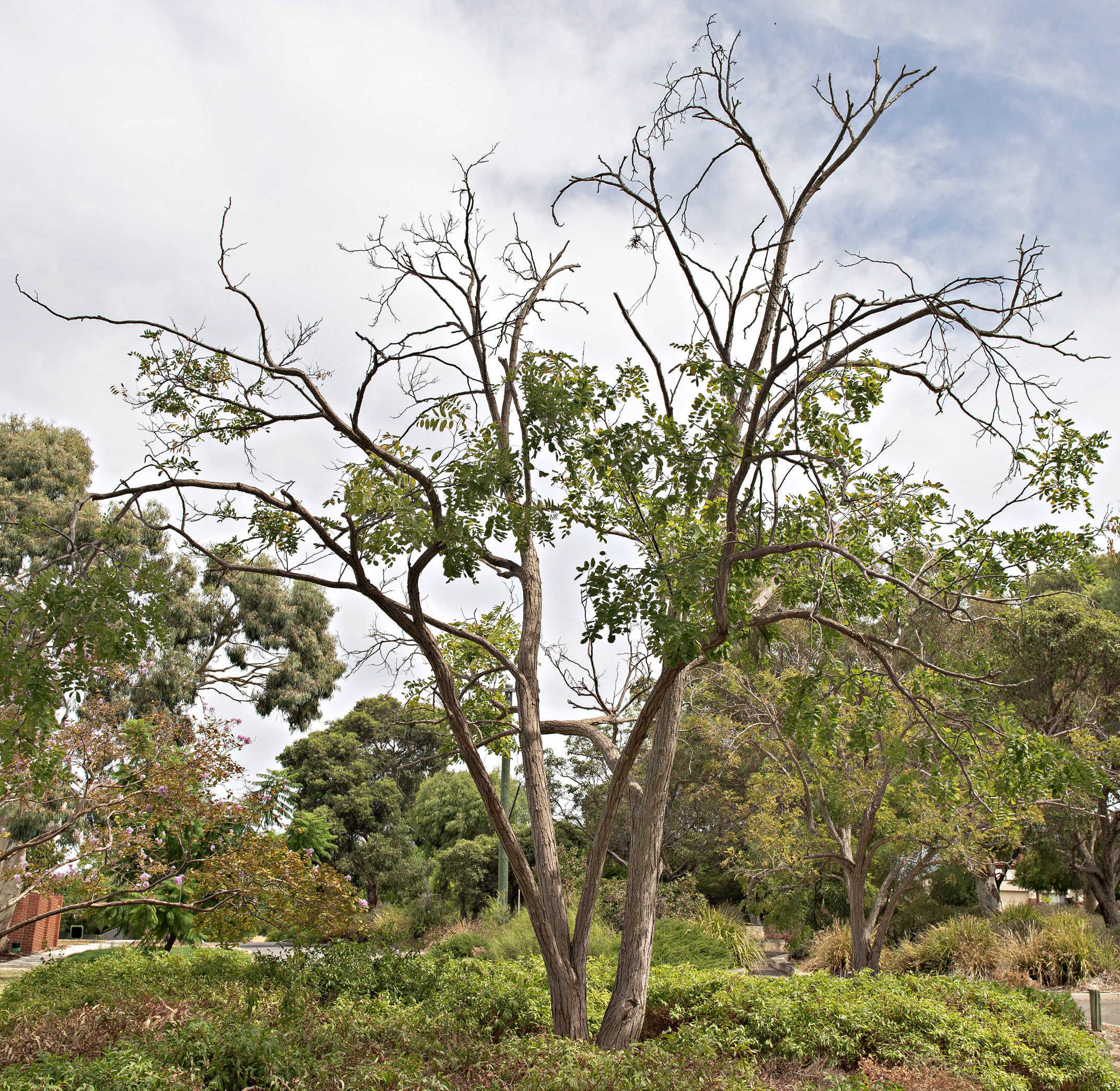Actions to minimise spread
Pruning or removal of infested trees is a necessity when it comes to stopping the spread and eradicating the beetle. Removing infected trees will help save many other healthy trees.
Unfortunately, there are currently no effective chemical treatments for Polyphagous shot-hole borer (PSHB) as the Fusarium fungus prevents systemic insecticides and fungicides from reaching the borers. Further, surface application of chemicals is ineffective as PSHB spends most of their lives inside the host tree.
Contact DPIRD for advice regarding treatments or tree removal. Incorrect treatments can cause further damage to the tree and can aid in the spread of PSHB.
Early detection
- Monitor susceptible species including your local street and park trees for signs of borer damage and report any suspicious infestation signs to DPIRD.
- Speak to your family, friends and neighbours to create awareness.
Firewood - buy it where you burn it
PSHB does not move far on its own but can travel long distances when people unknowingly intervene. Firewood can catalyse and provide a great mechanism for the distribution of the beetle without you knowing.
- Don't move firewood long distances including when you go camping - buy it where you burn it.
- Don't burn wood from host trees, especially if it looks like it has borer damage. Beetles disperse when infested wood is burnt.
Tips for keeping your trees healthy
- Use grass clippings or compost as mulch as possible in your garden as wood chips from non-reputable places can spread PSHB
- While pruning or gardening check your plants and branches for sign of the borer
- Disinfect pruning tools. Any tools (including chainsaws and woodchippers) that come into contact with infected wood should be sanitised before using on uninfected trees
- Try to avoid moving plants or wood products too far from your local area inside the Quarantine Area
- Don’t move plants, wood or green waste from a known beetle infestation area
- Follow the current Quarantine Area requirements
- Plant native species over exotic plants. See the recommended plant list
- Don’t take it upon yourself to dispose of a possibly infested plant
- Contact DPIRD regarding any questions or advice
Report a suspected Polyphagous shot-hole borer infestation
Please include a ballpoint pen or ruler in photos of bore holes. This assists us in assessing the size of the bore holes.
DPIRD Pest and Disease Information Service
MyPestGuide®



